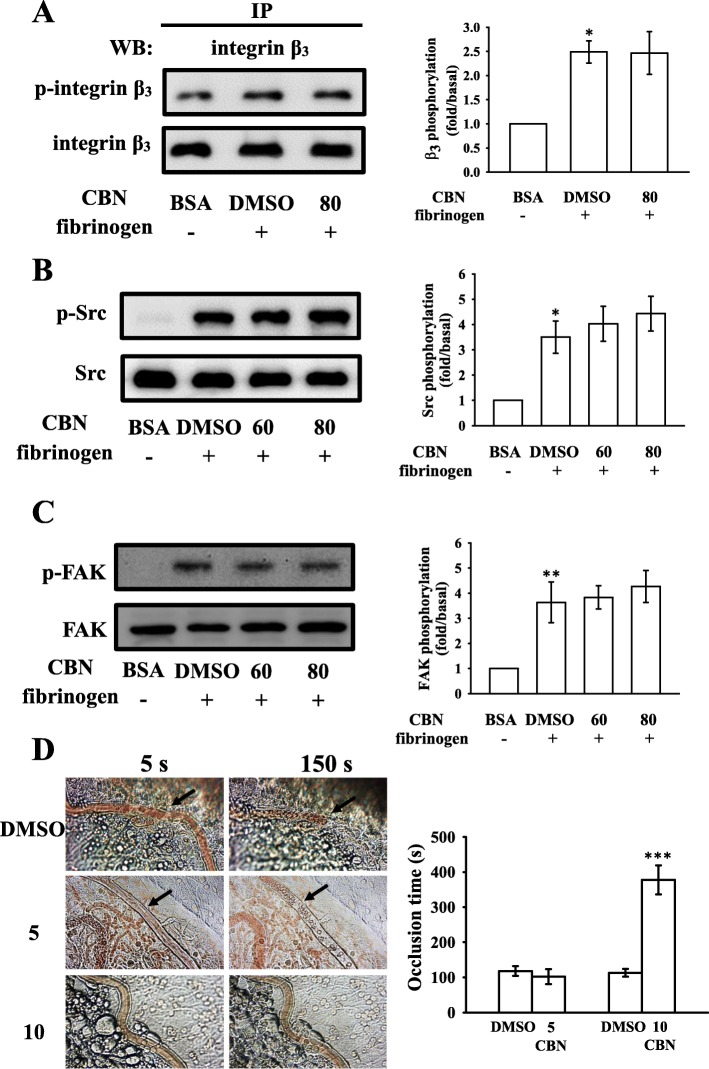Fig. 7.
Effects of columbianadin (CBN) on integrin β3, Src, and FAK phosphorylation in platelets exposed to a fibrinogen-coated surface and on vascular thrombosis in the mesenteric venules of mice. (a) For immunoprecipitation study, washed platelets were preincubated with the solvent control (0.1% DMSO) or CBN (80 μM) and allowed to spread on immobilized fibrinogen (100 μg/mL). The platelets were lysed and Protein G Mag Sepharose Xtra beads were added with the anti-integrin β3 mAb (1 μg/mL) for immunoblotting. (b, c) Washed human platelets were preincubated with the solvent control (0.1% DMSO) or CBN (60 and 80 μM) and subsequently activated by immobilized fibrinogen (100 μg/mL) for determining the levels of (b) Src and (c) FAK phosphorylation. (d) For animal study, mice were administered an intravenous bolus of the solvent control (0.1% DMSO) or CBN (5 and 10 mg/kg), and the mesenteric venules were irradiated to induce microthrombus formation (occlusion time). Microscopic images (400× magnification) of 0.1% DMSO-treated controls and the 5 and 10 mg/kg CBN-treated groups were recorded at 5 and 150 s after irradiation, respectively. The photographs are representative of eight similar experiments, and the arrows indicate platelet plug formation. Data are presented as means ± SEM (a-c, n = 4; d, n = 8). *p < 0.05 and **p < 0.01, compared with the immobilized BSA group (a-c); ***p < 0.001, compared with the 0.1% DMSO-treated group (d)

